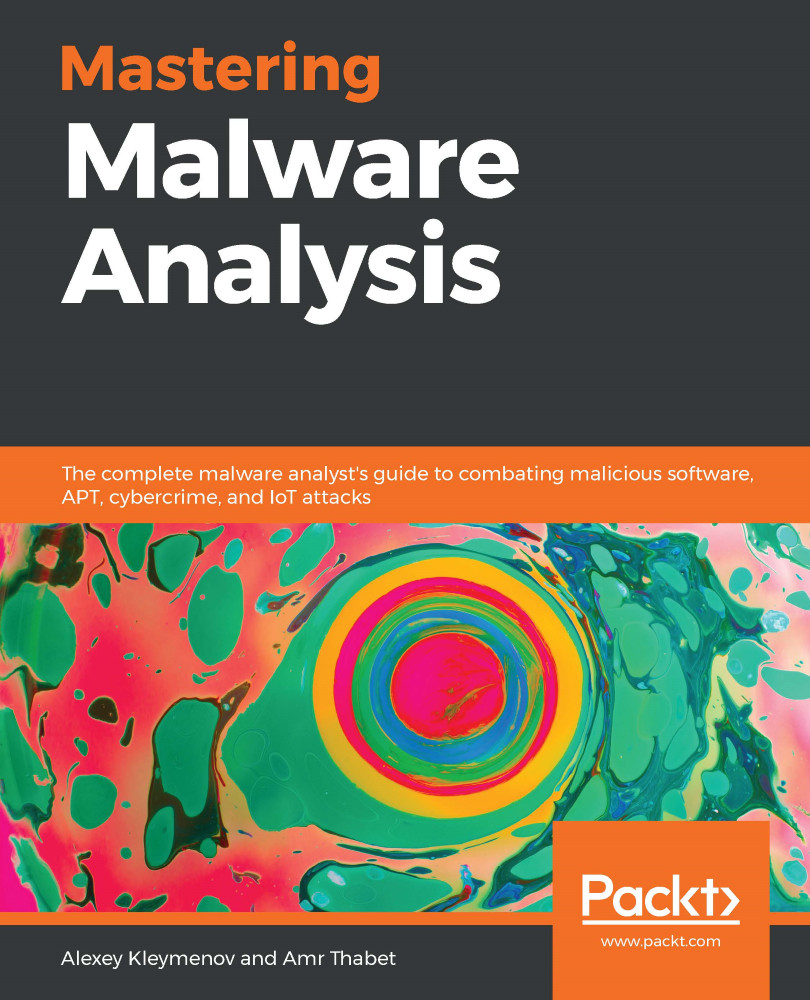-
Book Overview & Buying

-
Table Of Contents
-
Feedback & Rating

Mastering Malware Analysis
By :

Mastering Malware Analysis
By:
Overview of this book
With the ever-growing proliferation of technology, the risk of encountering malicious code or malware has also increased. Malware analysis has become one of the most trending topics in businesses in recent years due to multiple prominent ransomware attacks. Mastering Malware Analysis explains the universal patterns behind different malicious software types and how to analyze them using a variety of approaches. You will learn how to examine malware code and determine the damage it can possibly cause to your systems to ensure that it won't propagate any further. Moving forward, you will cover all aspects of malware analysis for the Windows platform in detail. Next, you will get to grips with obfuscation and anti-disassembly, anti-debugging, as well as anti-virtual machine techniques. This book will help you deal with modern cross-platform malware. Throughout the course of this book, you will explore real-world examples of static and dynamic malware analysis, unpacking and decrypting, and rootkit detection. Finally, this book will help you strengthen your defenses and prevent malware breaches for IoT devices and mobile platforms. By the end of this book, you will have learned to effectively analyze, investigate, and build innovative solutions to handle any malware incidents.
Table of Contents (18 chapters)
Preface
A Crash Course in CISC/RISC and Programming Basics
Section 2: Diving Deep into Windows Malware
Basic Static and Dynamic Analysis for x86/x64
Unpacking, Decryption, and Deobfuscation
Inspecting Process Injection and API Hooking
Bypassing Anti-Reverse Engineering Techniques
Understanding Kernel-Mode Rootkits
Section 3: Examining Cross-Platform Malware
Handling Exploits and Shellcode
Reversing Bytecode Languages: .NET, Java, and More
Scripts and Macros: Reversing, Deobfuscation, and Debugging
Section 4: Looking into IoT and Other Platforms
Dissecting Linux and IoT Malware
Introduction to macOS and iOS Threats
Analyzing Android Malware Samples
Other Books You May Enjoy
Customer Reviews


